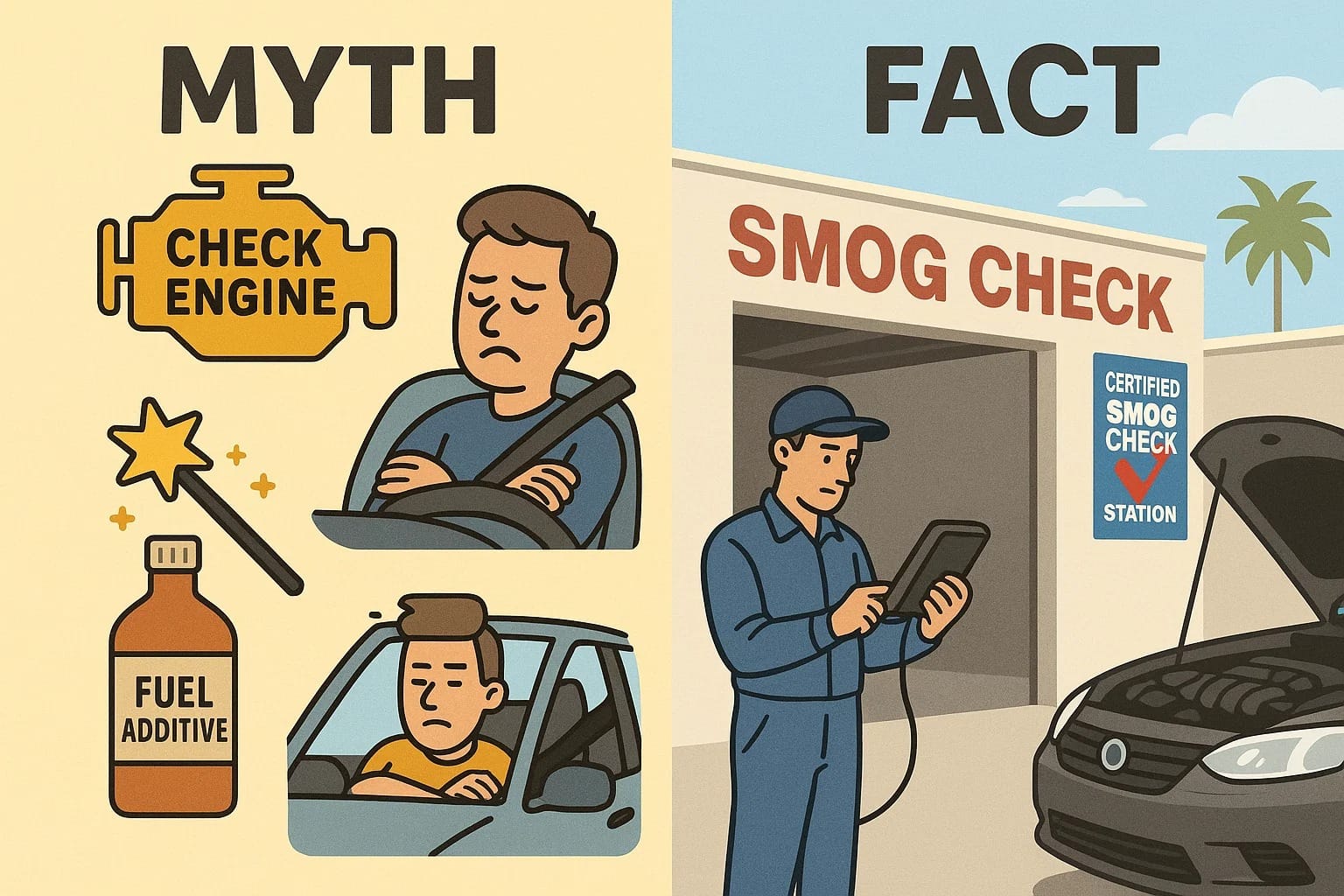When it comes to smog checks, there’s no shortage of misinformation floating around—especially in California, where emissions regulations are among the strictest in the country. At AB Smog Check, we see the effects of these myths every day: failed tests, unprepared drivers, and unnecessary repairs. The good news? Most of these issues are easily avoidable with accurate information.
Below, we bust the most common smog check myths so you can walk into your next test informed and confident.
Myth 1: Only Older Cars Need a Smog Check
Fact: It’s true that older cars are often more likely to emit pollutants, but California’s Smog Check Program is not limited to high-mileage or vintage vehicles. Most gasoline-powered vehicles that are more than eight model years old must undergo a smog check every two years, regardless of their age or condition.
Even newer vehicles can be tested during a change of ownership or initial registration in California. Don’t assume your car is exempt just because it looks new or runs well.
Reference: samsara.com – California Smog Check Rules
Myth 2: A Check Engine Light Won’t Affect the Tes
Fact: This is one of the most costly misconceptions. If your check engine light is on, your car will automatically fail the smog inspection—even if your vehicle seems to be running fine. The light typically indicates a problem detected by the Onboard Diagnostics (OBD) system that could be affecting emissions output.
Before testing, have the issue diagnosed and repaired, then drive your vehicle for 100–200 miles to allow the system to reset properly.
Reference: Family Auto Service – Smog Test Preparation
Myth 3: Fuel Additives Guarantee a Passing Grade
Fact: Fuel additives may help clean the fuel system or reduce carbon buildup in the short term, but they are not a guaranteed fix for emissions-related problems. They can’t repair broken oxygen sensors, malfunctioning EGR valves, or faulty catalytic converters.
Think of fuel additives as preventive maintenance—not a substitute for repairs. If your car is already struggling to pass, additives are unlikely to tip the scale.
Myth 4: Electric and Hybrid Vehicles Don’t Require Smog Check
Fact: Fully electric vehicles (EVs) are currently exempt from California’s smog testing. However, hybrid vehicles are not automatically exempt. In fact, many hybrid cars 2000 model year and newer are required to undergo a smog check starting at their eighth model year.
As hybrid vehicles age, their emission systems are still subject to wear and failure, and California has included them in the program to maintain environmental standards.
Reference: asktheref.org – Smog Check for Hybrids
Bonus Myth: Passing Once Means You’re Good Forever
Fact: Smog compliance is ongoing. Most vehicles must pass a smog check every two years and when changing ownership or registering out-of-state. Staying on top of your vehicle’s health ensures a smoother inspection process and fewer surprises.
Don’t let myths and half-truths derail your smog check experience. At AB Smog Check, we believe that knowledge is power—and preparation is key. Our certified technicians are here to answer your questions, explain the testing process, and help your vehicle stay road-legal and eco-friendly.
Need a smog test in California? Stop by AB Smog Check and get it done right the first time.



